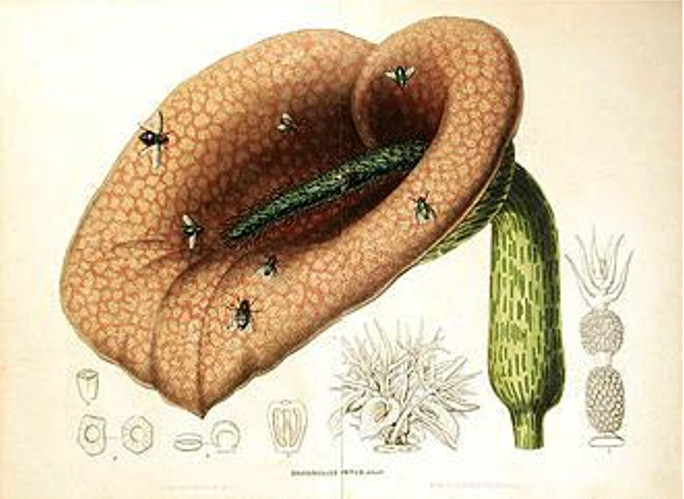- Series:Plants, Transcript English
Isaiah 40:8
“The grass withereth, the flower fadeth: but the word of our God shall stand for ever.”
 A flower called the dead-horse arum has a problem. The individual flowers are able to receive pollen for only one day. To make matters worse, its male parts are not mature that day. The next day, the male parts of the flower produce pollen, but the female parts of the flower have shriveled up and cannot receive it.
A flower called the dead-horse arum has a problem. The individual flowers are able to receive pollen for only one day. To make matters worse, its male parts are not mature that day. The next day, the male parts of the flower produce pollen, but the female parts of the flower have shriveled up and cannot receive it.
The dead-horse arum, which grows on islands in the Mediterranean, has a unique solution to this problem. When it’s ready to pollinate, the flower begins to generate heat and scent. The scent smells like rotting flesh, which attracts blow-flies. The flies, looking for a place to lay their eggs, crawl into a pocket around the base of the flower stalk. There, the blow-flies are trapped by spines and filaments. If these flies had previously visited another dead-horse arum, they transfer the pollen they picked up there to the female parts of the plant. The next day, when the male parts of the flower are producing pollen, the flies, now coated with this pollen, are released to pollinate another arum.
The complex dependence of the arum on the blow-flies – with its custom-designed features to lure and hold the flies just long enough to ensure pollination – had to come into existence all at the same time and in perfected form, making it a testimony to the genius of our Creator.
Author: Paul A. Bartz
Prayer: Father, I thank You that the entire creation glorifies You. Help me to glorify You with my life. Amen.
Ref: Science News, 12/13: 2003, pp. 379-381, Susan Milius, “Warm-Blooded Plants?” Photo: Helicodiceros_muscivorus Engl. (PD)
Copyright © 2019 Creation Moments, Inc. PO Box 839, Foley, MN 56329 800-422-4253 www.creationmoments.com
